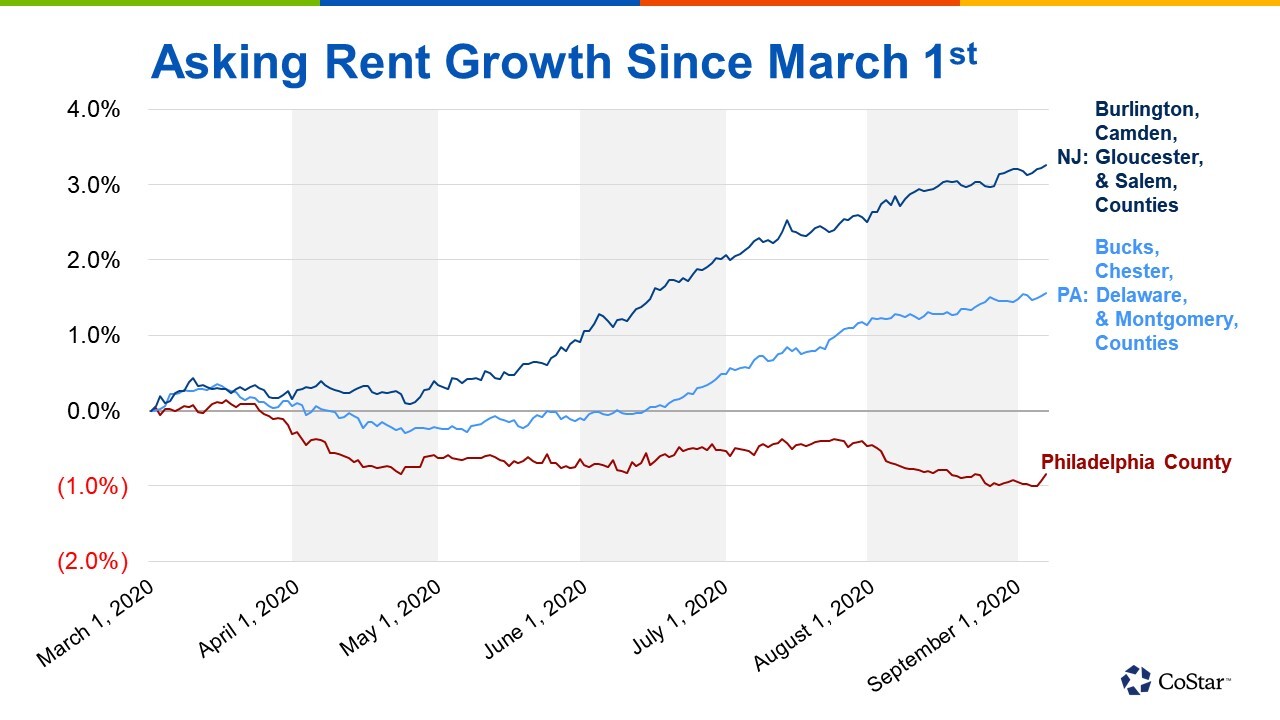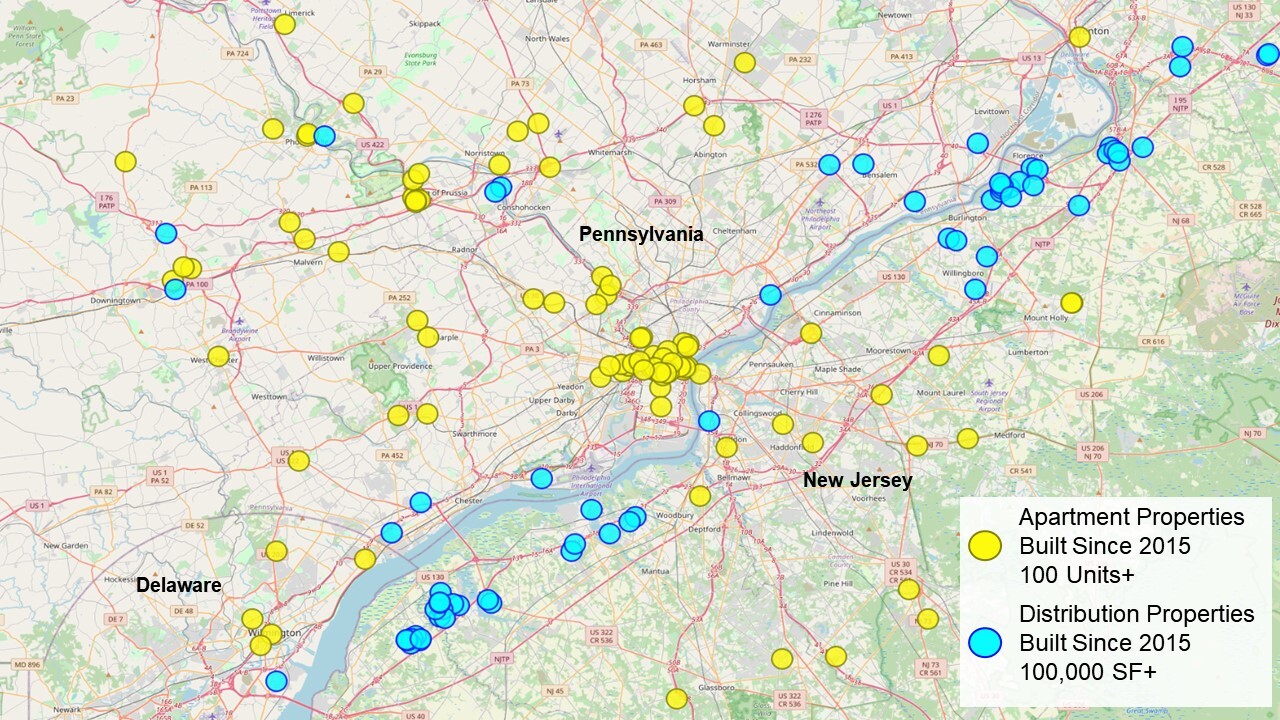By Ben Atwood CoStar Analytics
There’s some high drama unfolding around the commercial property market in Allentown, Pennsylvania. What's at stake is cash, political capital and perhaps even the future of the commonwealth itself.
The protagonist of this comeback story is J.B. Reilly, a local resident and head of City Center Corp. His firm has been extraordinarily active building in Allentown over the past six years and his goal is an ambitious one: to turn Allentown into a 24/7 live-work-play city.
Such an aspiration would've seemed ludicrous a generation ago. But over the past decade, Reilly has spent over $200 million breathing life back into the city Billy Joel left for dead in the 1980s. The outsourcing and automation the Piano Man lamented upon are the antagonists of this tale, whose first act is a tragedy.
Allentown was built around manufacturing, so its steep decline over the last few decades created a host of fiscal and social problems. By the early 2000s, Pennsylvania's third-largest city had a poverty rate about 50% times higher than the state’s average, most major office-users had migrated to the suburbs and suburbanites warned outsiders away from downtown.
This narrative is common to nearly every major city in Pennsylvania, but it was particularly troubling in Allentown because its population was actually growing.
Low-income immigrants priced out of neighboring New York and New Jersey increasingly began chasing their American dream here, so local resources were being strained at a time when the tax-base was dwindling, a recipe for disaster.
Enter state Sen. Patrick Brown, who represents Lehigh County in Harrisburg. He kickstarted Act II of the Allentown saga in 2009, by pushing through one of the largest tax-incentive programs in Pennsylvania history, commencing a commercial real estate experiment that he says has no peer.
"Pennsylvania's small markets all have unique challenges," said Brown. "In the case of Allentown, there were no Class-A offices or apartments at all. People and businesses were staying away from the city. Our urban core was totally dead and we decided a uniquely aggressive approach was needed to quickly turn the tide."
Neighborhood Improvement Zone
In strongly condensed, thoroughly layman’s terms, Brown's legislation created a 128-acre "Neighborhood Improvement Zone" inside downtown Allentown. Within its boundaries, a substantial chunk of the state taxes paid by tenants renting in any of the new or refurbished properties can be redirected to pay off development loans if the tax amount owed exceeded what the state was collecting in 2009.
Roughly speaking, if the Neighborhood Improvement Zone generated $20 million in state tax revenue in 2009 and $40 million in 2019, $20 million would be given back to the developer to pay off debt. If the taxes owed exceed the amount due to both the state and developer, the excess is given back to the city for improvement projects.
The rules are a little more complicated than that, but the idea behind them is simply to reduce risk for developers in hopes of bringing tenants back downtown to rehabilitate a city that once helped build this country.
And it worked.
Over the past eight years, more than $1 billion has been invested into rebuilding the Neighborhood Improvement Zone, and Center City Allentown now has a luxury hotel, four four-star apartment complexes, four four-star offices and a 10,000-seat arena where the Philadelphia Flyers' American Hockey League affiliate Lehigh Valley Phantoms play.
None of that existed a decade ago and save for the hotel, these projects are nearly full now.
Many of the 6,000 employees working within them moved into the new multifamily, increasing foot traffic and allowing modern retail to mushroom up around Center City. In the past few years, two brewpubs, a coal-fire pizza kitchen, craft-beer bar and an art and yoga studio have opened near the Neighborhood Improvement Zone. Growth is extending outside its boundaries down Seventh Street, where a local foodie scene is developing around Central and South American cuisine.
The developments have been a boom for the city’s coffers, said Leonard Lightner, director of community and economic development in Allentown.
"From the city's perspective, the increase in taxes has been tremendous," Lightner said. "Compared to where we were in 2008, we are able to put a lot more money back into the community, into the schools.”
They’ve been a boom for Reilly, too. He built nearly all of the new projects and wants to build more soon.
"Frankly, we underestimated multifamily demand," he said. "And we've actually seen an acceleration since March."
The Final Challenge
The pandemic's arrival marks the onset of Act III: The Final Challenge. This story's climax is still being written, and frankly, it could go either way. If this year has taught us anything, it's that the world can change in the blink of an eye and no one can predict the future. The shutdown has altered the commercial real estate industry forever and it is entirely possible that the virus flattens Allentown’s redemption arc.
Office demand is limited in Lehigh, and this was a tight market before the shutdown. Properties are largely filled by local tenants with frugal tastes, and it is unknown how many will migrate into more expensive digs if they can adapt to remote work. Though things are holding up well through September, if Center City’s retail scene buckles under reduced seating capacity and fear of infection, then demand for apartments might soften and potential office-tenants might look elsewhere.
But there are numerous signs the virus could strengthen Allentown's momentum. Many, including Reilly, as well as CoStar Advisory Services, believe that a shift to suburban areas is plausible, particularly if companies widely adapt a hybrid remote/in-person office schedule and a hub-and-spoke location model.
If they do, Allentown effectively becomes a suburb of New York City, Northern New Jersey and Philadelphia. Both Reilly and Lightner claim they've been fielding more calls from potential tenants in those areas. Class A office space is about 40% cheaper in Lehigh, employees cost less and Pennsylvania’s taxes are lower too.
Outmigration applies to people, as well. National outlets are filled with stories of draining cities and interestingly, Lehigh Valley’s apartment market remains airtight, with overall vacancies hovering around 5%. City Center’s multifamily projects are more than 95% occupied and its 250-unit development on Linden Street is 70% pre-leased months before delivery.
That's pretty impressive for a secondary Pennsylvania city. It's too early to say Lehigh is growing because of the coronavirus pandemic, but the Morning Call has published multiple reports about the regional housing market's curious uptick in sales, and recent Apartments.com data shows that search activity for local multifamily units is slightly higher than the national average.
More tenants and residents would boost demand, but Reilly also believes locals will become more interested in new supply, which is built with COVID-19 in mind. CoStar Advisory Services also believes this to be a distinct possibility, as do several of the largest office developers in nearby Pittsburgh, who seem to announce a new project every week. Like Pittsburgh, Lehigh has a surplus of dated inventory that was aging into obsolescence before March. Allentown is far more frugal than the Steel City, but the Neighborhood Improvement Zone allows Reilly to keep rates affordable for small local tenants.
Time will tell, but it won't take much to keep the momentum going. Allentown is relatively small, and the bar for growth was fairly low. That goes for the rest of the state, too, where this same story has played out in places such as Reading, York, Erie, Johnstown, Scranton and Wilkes-Barre.
Sen. Brown said he’s keeping a very close eye on the Neighborhood Improvement Zone's progress.
"It's just one community now," he said. "But there's a lot of challenged cities across this state we hope to consider this plan for."
http://omegare.com/


